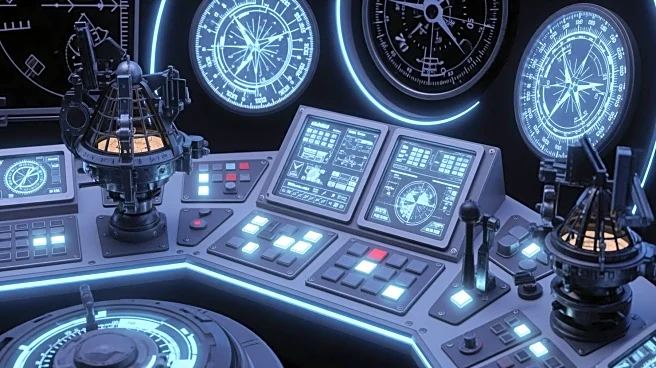What's Happening?
The MIT Maritime Consortium has published a 'Nuclear Ship Safety Handbook' aimed at establishing standards for safe nuclear propulsion in maritime operations. This handbook integrates research data, operational experiences, and standards to address potential
issues in the design and operation of nuclear-powered ships. It is structured to provide both technical and practical guidance, alongside policy considerations, to aid engineers in navigating the complexities of nuclear and maritime safety design decisions. The handbook emerges in the context of a recent U.K.-U.S. Technology Prosperity Deal, which includes civil maritime nuclear applications, highlighting the need for a modern regulatory framework for nuclear-powered commercial ships.
Why It's Important?
The release of this handbook is significant as it addresses the outdated nature of current nuclear-maritime policies, which are often limited to specific technologies like pressurized water reactors. With the global acceptance of nuclear energy on the rise, as evidenced by over 30 nations building or planning their first reactors, there is a pressing need to align safety rules across borders for nuclear-powered ships and ports. The handbook aims to serve as a foundation for establishing international standards, potentially leading to the creation of a maritime shipping corridor between the U.S. and U.K., and enhancing energy resilience for defense facilities.
What's Next?
The handbook could influence the development of a clear regulatory framework for nuclear-powered commercial ships, as the U.S. and U.K. explore novel applications of advanced nuclear energy. This initiative may lead to the establishment of international standards and a maritime shipping corridor, strengthening energy resilience and setting a precedent for other nations to follow. The collaboration between the U.S. and U.K. may also encourage other countries to adopt similar standards, promoting global safety in nuclear maritime operations.
Beyond the Headlines
The handbook's release could trigger a shift in how nuclear energy is perceived and utilized in maritime operations, potentially leading to increased investment in nuclear-powered ships. This development may also prompt discussions on the ethical and environmental implications of nuclear propulsion in commercial shipping, as stakeholders weigh the benefits of energy efficiency against potential risks.















